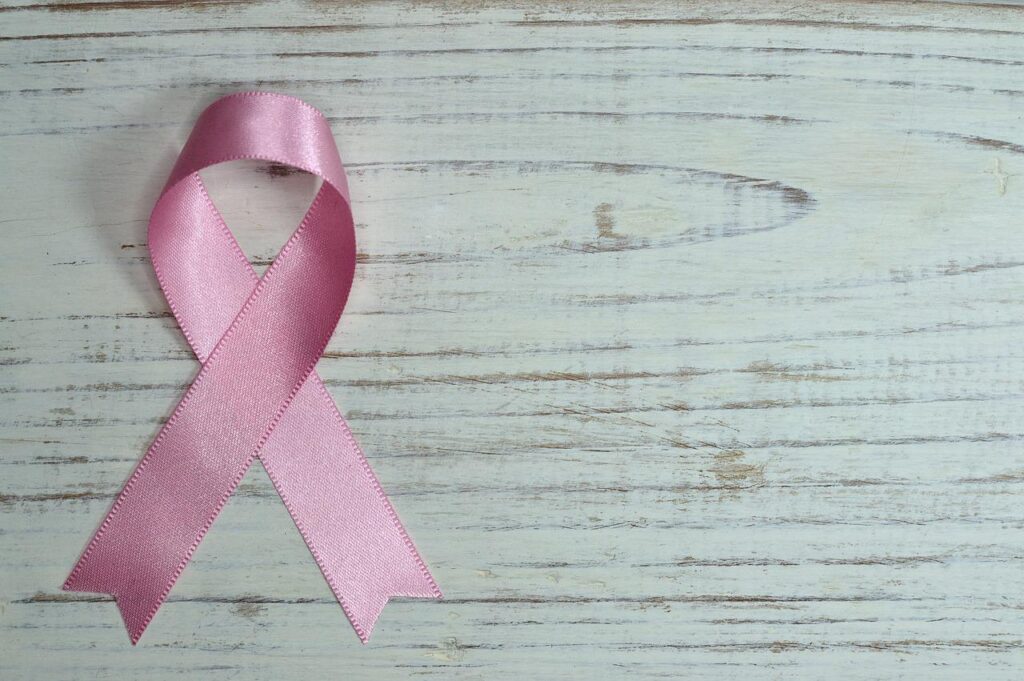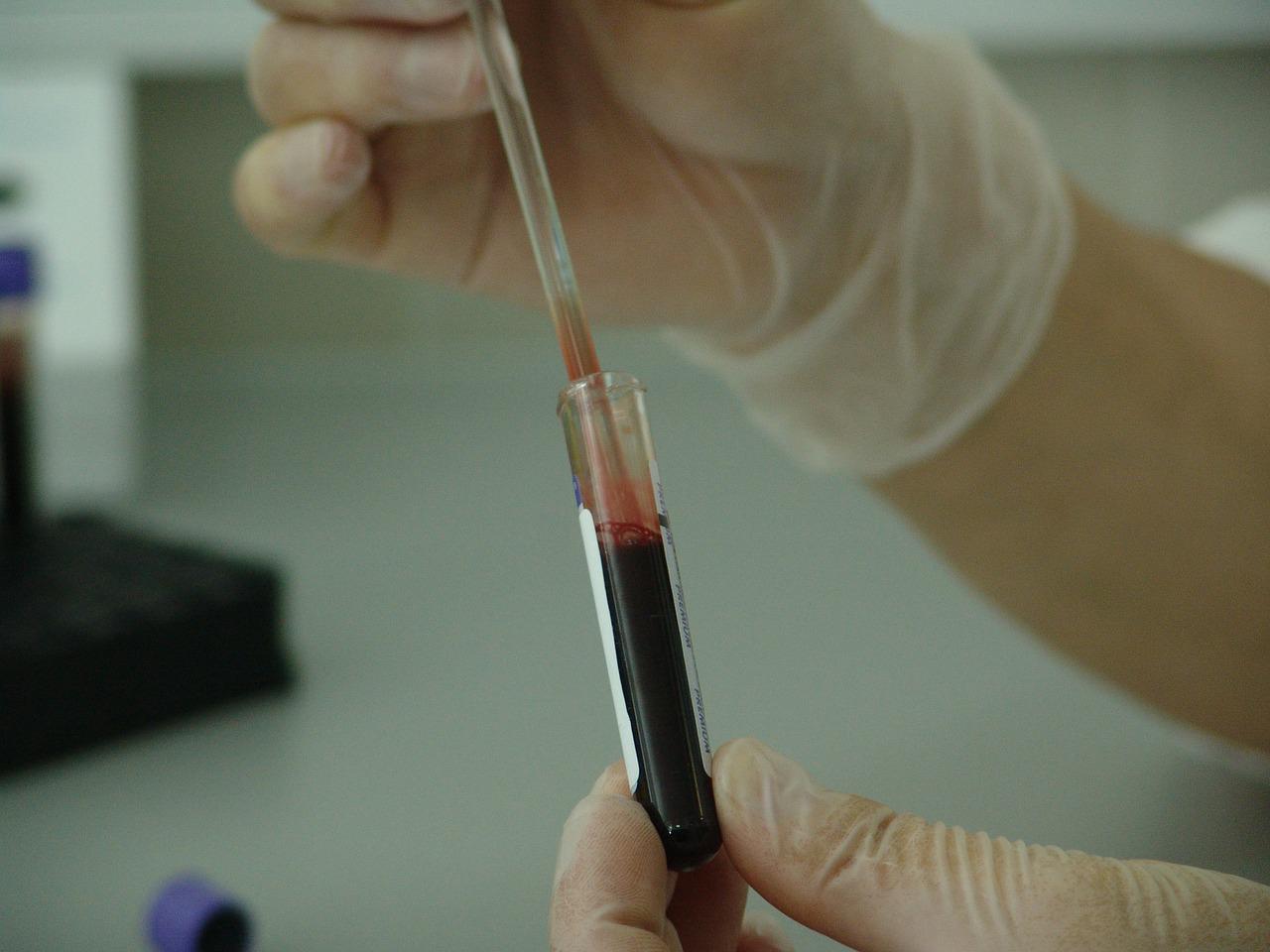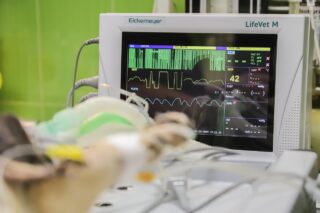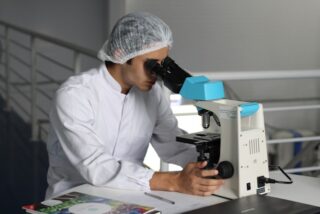
Breast cancer in men is really uncommon, but not so uncommon that we shouldn’t talk about it. About one in 100 People with breast cancer are men. The risk factors for breast cancer in men are: getting older, as with women, a family history, including and particularly a mutation in the BRCA to gene. Other factors include larger breast size, that can be due to multiple things, it can be due to problems or abnormalities in development of the testes, for example, with a syndrome called Klinefelter syndrome.
Doctors can also see it with some medications. So some men are on medications that cause enlargement of the breast. And a lot of men are embarrassed about this, but screening for breast cancer is something to consider and talk about with your doctor if you have enlarged breasts. People with liver problems can get in large breasts as well. In fact, in many mammography suites, they have a whole separate section for men, who are getting mammograms to follow up breast abnormalities or who get screening. So it’s not that odd.
Couple of things that are different about breast cancer in men compared to women. One thing is that ductal carcinoma is almost exclusively what doctors see in men. So lobular carcinoma, which is about 5% or so of breast cancer in women is very rare in men. Why would that be? Well, that men’s breasts don’t generally form lobules. So lobular breast cancer is less common. You can also be seen in men, but it’s pretty uncommon to catch that. Because usually we catch does ductal carcinoma in sight you on mammogram and men are generally not getting mammograms.
So how doctors find breast cancer in men?
Well, the most common thing they seen is a lump in the breast. This is not a symmetric mass or thickening, but it’s actually a breast abnormality. One thing to know is that men don’t even know they can get breast cancer in many cases. So they may not call their doctor, they may not get seen for the lump, partly because of embarrassment. And also because they just don’t know that they can get breast cancer. There are quite a few people diagnosed with breast cancer, who were being seen for another problem. For example, they were going to have a surgery. And as part of their pre surgery examination, their breast cancer was found. So it’s fairly common that a breast cancer in men will be picked up in a way we generally don’t see in women that might be part of your story.
How do treating breast cancer in men?
Generally the same way we do in women so surgery, radiation therapy, hormonal therapy, and even chemotherapy. So surgery because most men don’t have large enough breasts to have a breast conserving procedure usually consists of removal of all the chest tissue in the breast area. So most men with breast cancer will have a mastectomy. As with all breast cancer, doctors like to look at the lymph nodes or the glands under the arm involved with cancer. That’s part of staging determining what stage the cancers, which helps us determine how best to treat the breast cancer.
So after surgery, if additional treatment for the breast area, chest wall area and lymph node areas needed, that would be done with radiation therapy. Doctors generally do that and people who have positive margins where the cancer wasn’t completely cleared and the chest wall area with surgery, and also, radiation to the lymph node area. If the lymph nodes had cancer in them, that’s not always the case.
Most breast cancer in men is positive for the estrogen receptor. So hormone receptor breast cancer that has the estrogen and or the progesterone receptors, doctors use anti hormonal therapy, like tamoxifen, or the aromatase inhibitors, what works trying to do is block any estrogen in your body. And yes, men have estrogen to from getting to any residual or leftover cancer cells elsewhere in your body. So that’s how tamoxifen works and then even though you’re a man, or your family member or friend is a man, we want to block any production of estrogen by other tissues in the body, particularly in men, the fat cells. So estrogen is made by ovaries and women, and by other tissues like the adrenal glands and the fat in our body, we can shut that production of estrogen off which can sort of start any tumors left elsewhere in the body. So just to recap, surgery, maybe radiation therapy, and then anti estrogen therapy.
Doctors use chemotherapy and people whose tumors are larger, and involve the lymph nodes. And as with everybody, chemotherapy is always your choice. Make sure you understand why you’re getting chemotherapy, what the benefit is, and what the side effects might be. Chemotherapy in general causes fatigue, hair loss, sometimes nausea, were really good at controlling that.

The other thing to consider in male breast cancer is looking at your family history and seeing if getting tested for an inherited susceptibility or for hereditary breast cancer is a good idea. Why would this matter? Well, it can help to doctors identify risk in your other family members and if you have an inherited mutation, they also have a new type of treatment called PARP inhibitors. But this is a newer therapy that works specifically in people who have an inherited gene from either side of their family that increase their risk of breast cancer.




